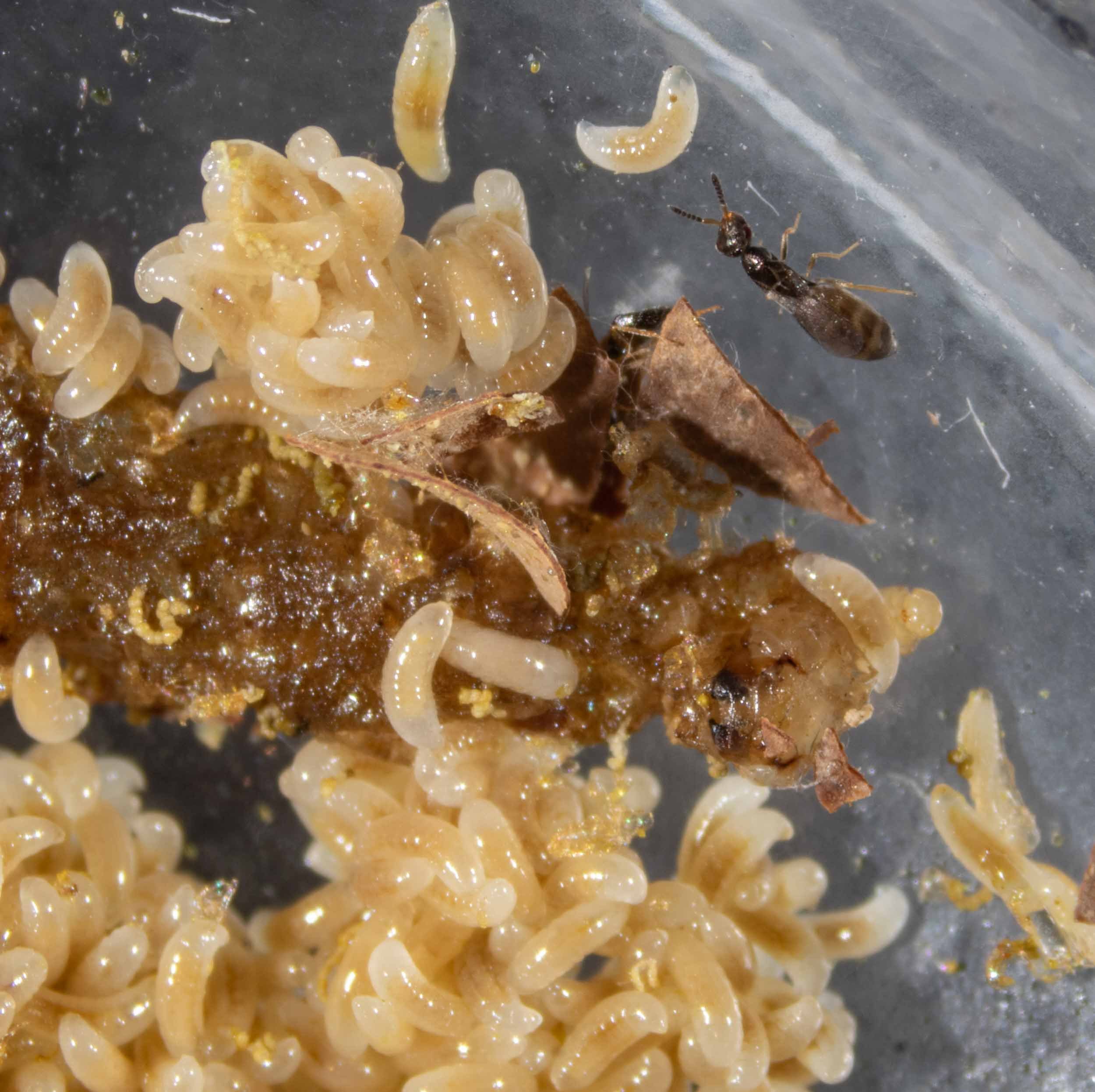
Cocoon A contents
A reminder of the scene that greeted me when I first tore open the cocoon within cell A.
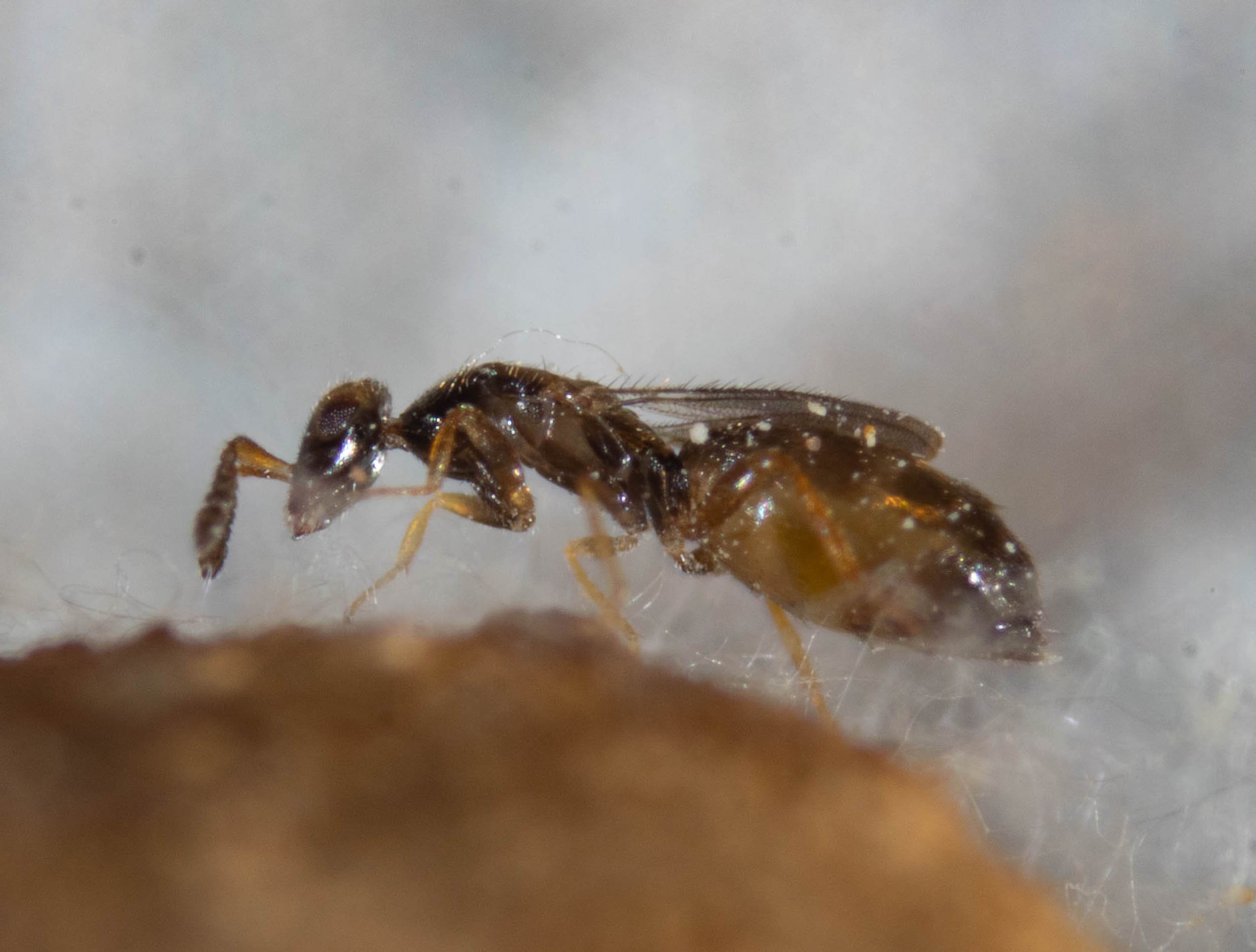
shorter wings, small eyes
Many of the females I saw when I first opened the cells looked like this. Her wings are short and her eyes less prominent than in ‘later’ females. I’m assuming this is a ‘brachypterous female’ … although the differences aren’t as obvious I imagined they might be.
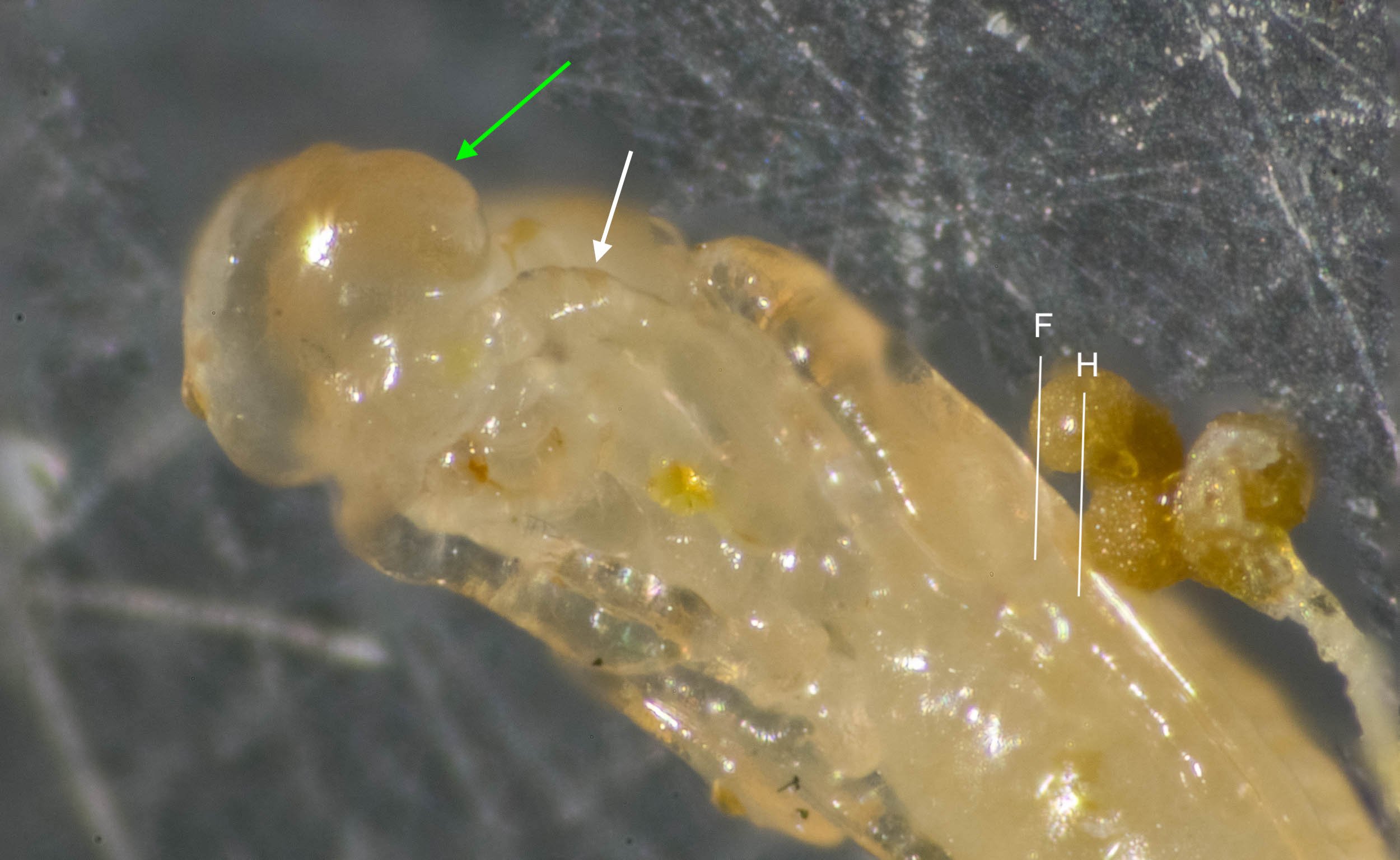
early stage female pupa
Even at this early stage of transformation, this is clearly female – the scape is not swollen (white arrow). And it is evidently a long-winged (dispersive) female – the eyes are large and bulging (green arrow) and the wings are relatively long (F = tip of forewing; H = tip of hindwing).
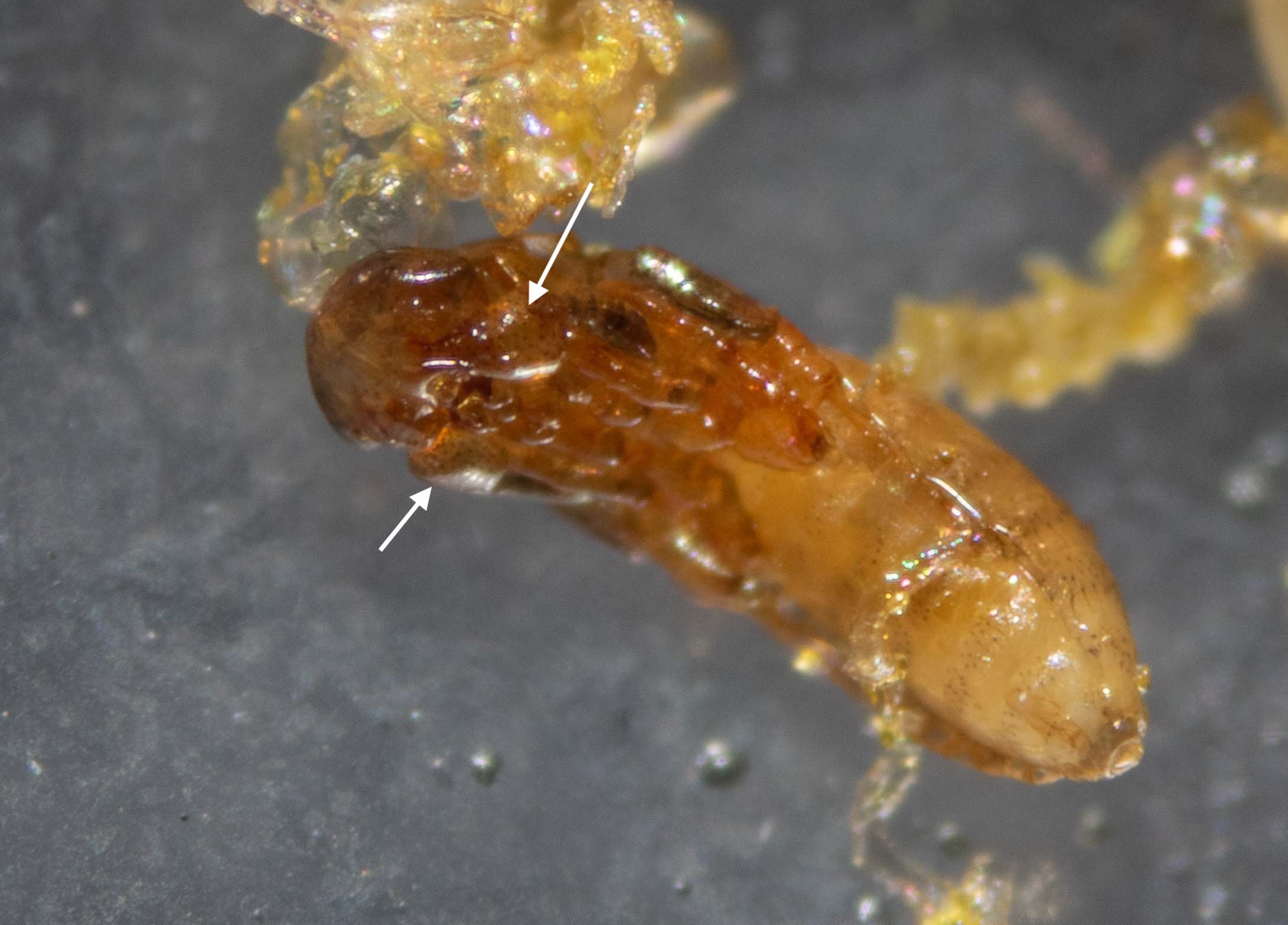
male pupa
Sexes are easily distinguished, even at the pupal stage. Most obvious are the swollen bases (‘scapes’) of the antennae in the males (white arrows).
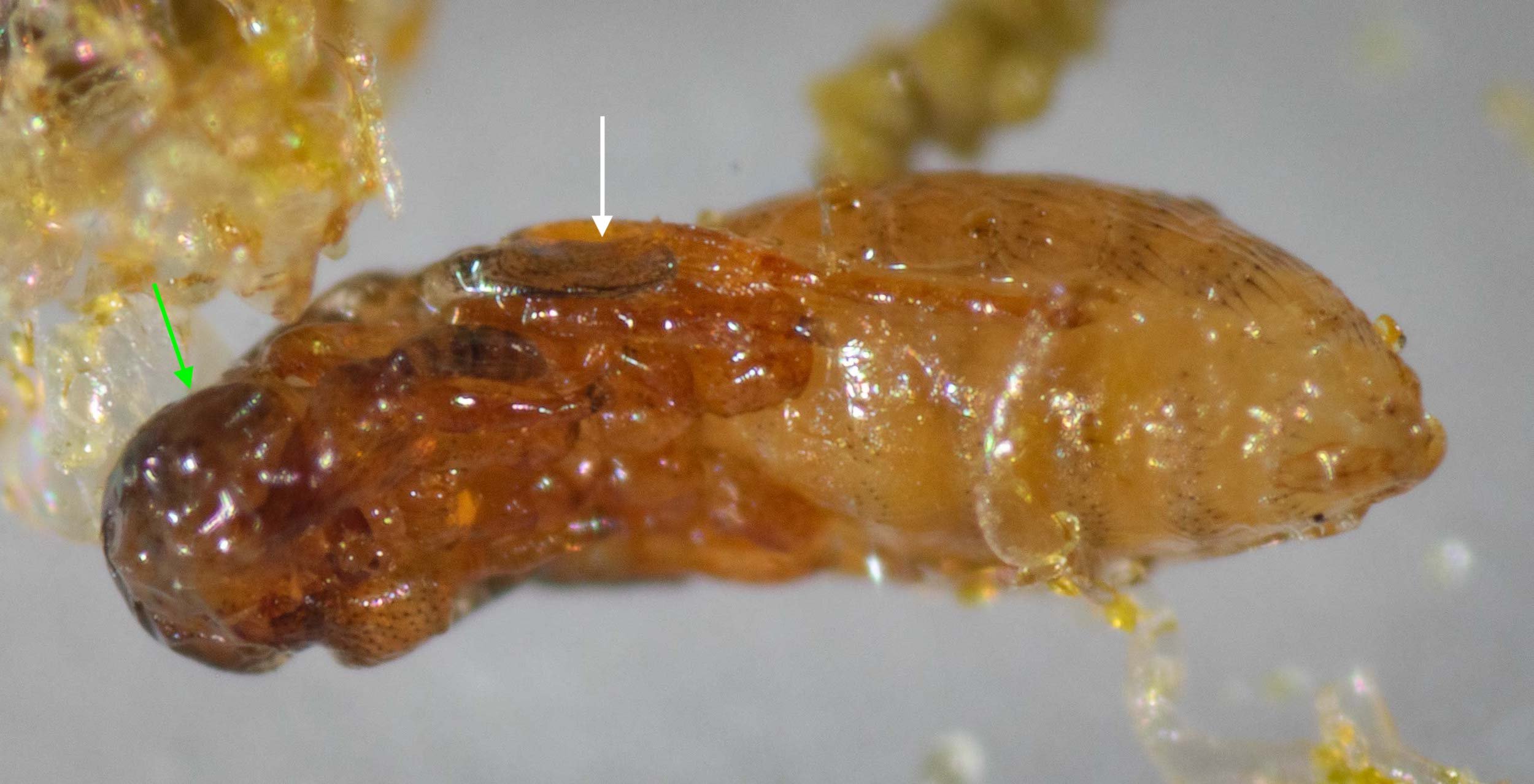
late stage male pupa
This is the same male pupa as in the previous image, but one day on. The cuticle is darker, the body bristles longer, and the wing more developed (white arrow). He emerged the following day. Note that even at this stage there is no obvious eye … yet another clue as to sex. In females the bulging eyes are apparent early in pupal development.
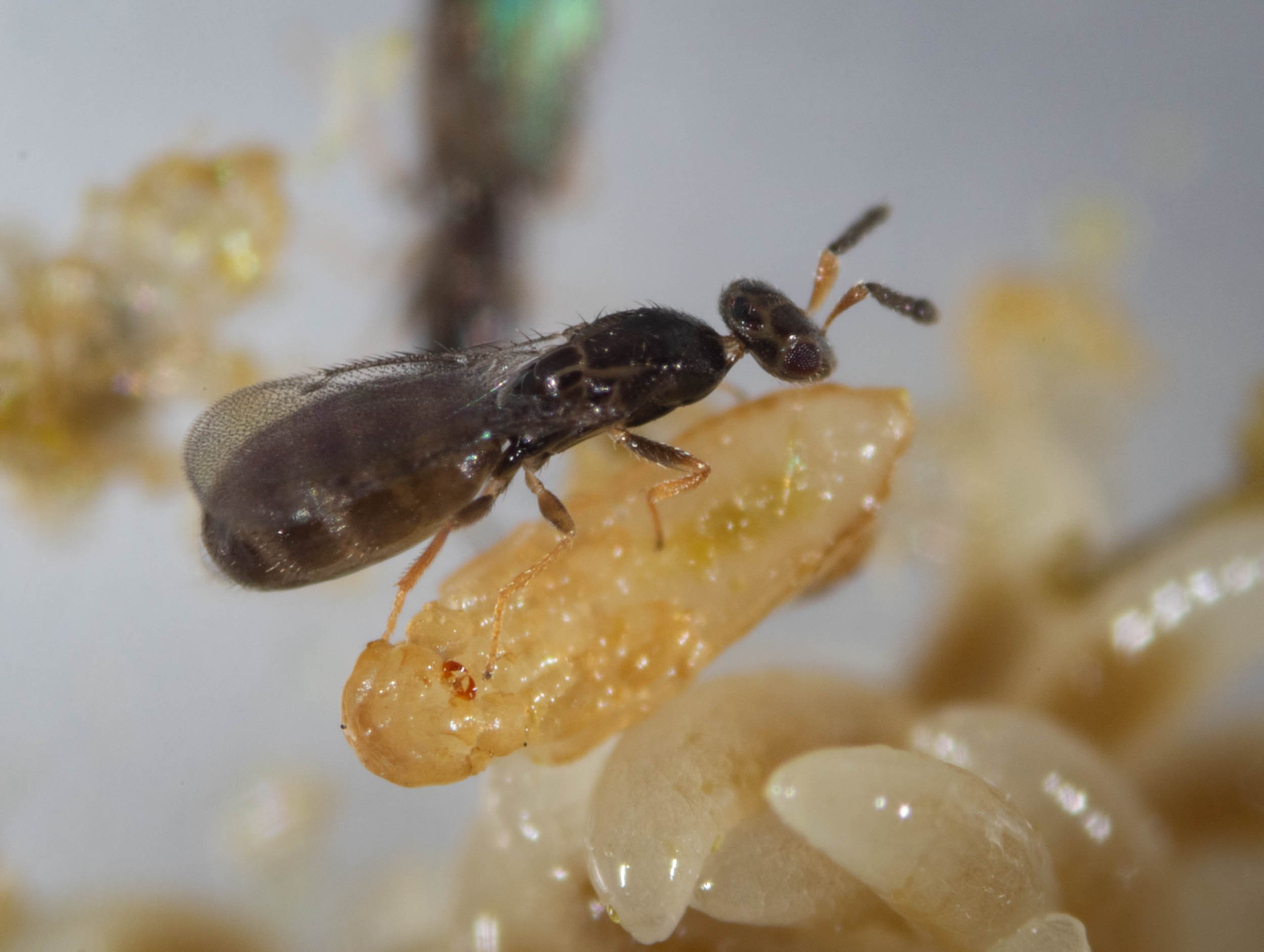
fully winged
Her wings extend to nearly the end of her abdomen, and her eyes are well developed. Most females have this form. Her oldest sisters, however, were short-winged and would never seek to leave the nest.
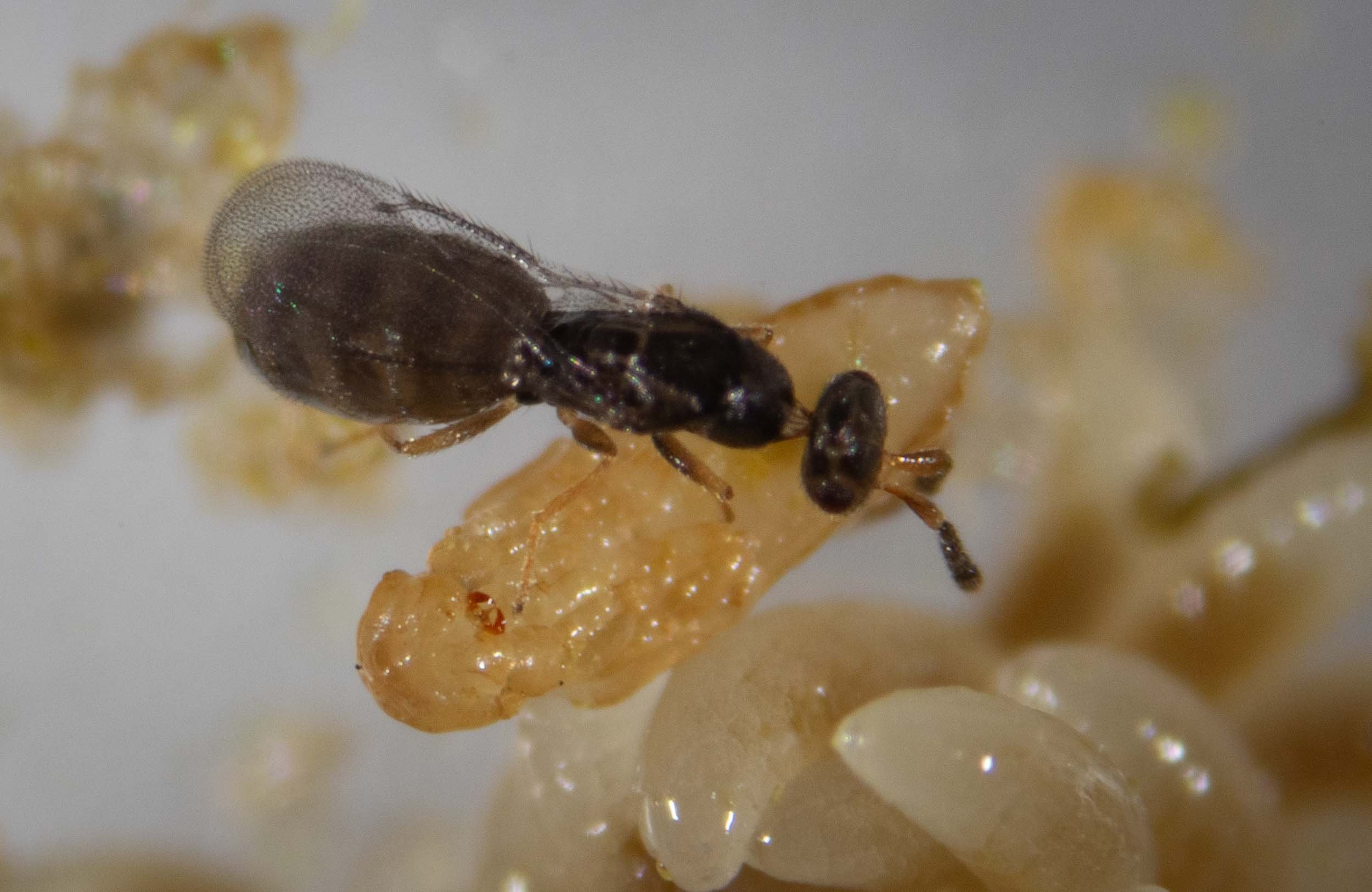
virgin female
She regularly visits male pupae, touching them with her antennae. I had removed all the adult males from this dish before she emerged from her pupa. Now she must wait. Only once mated will she seek to leave her natal nest.
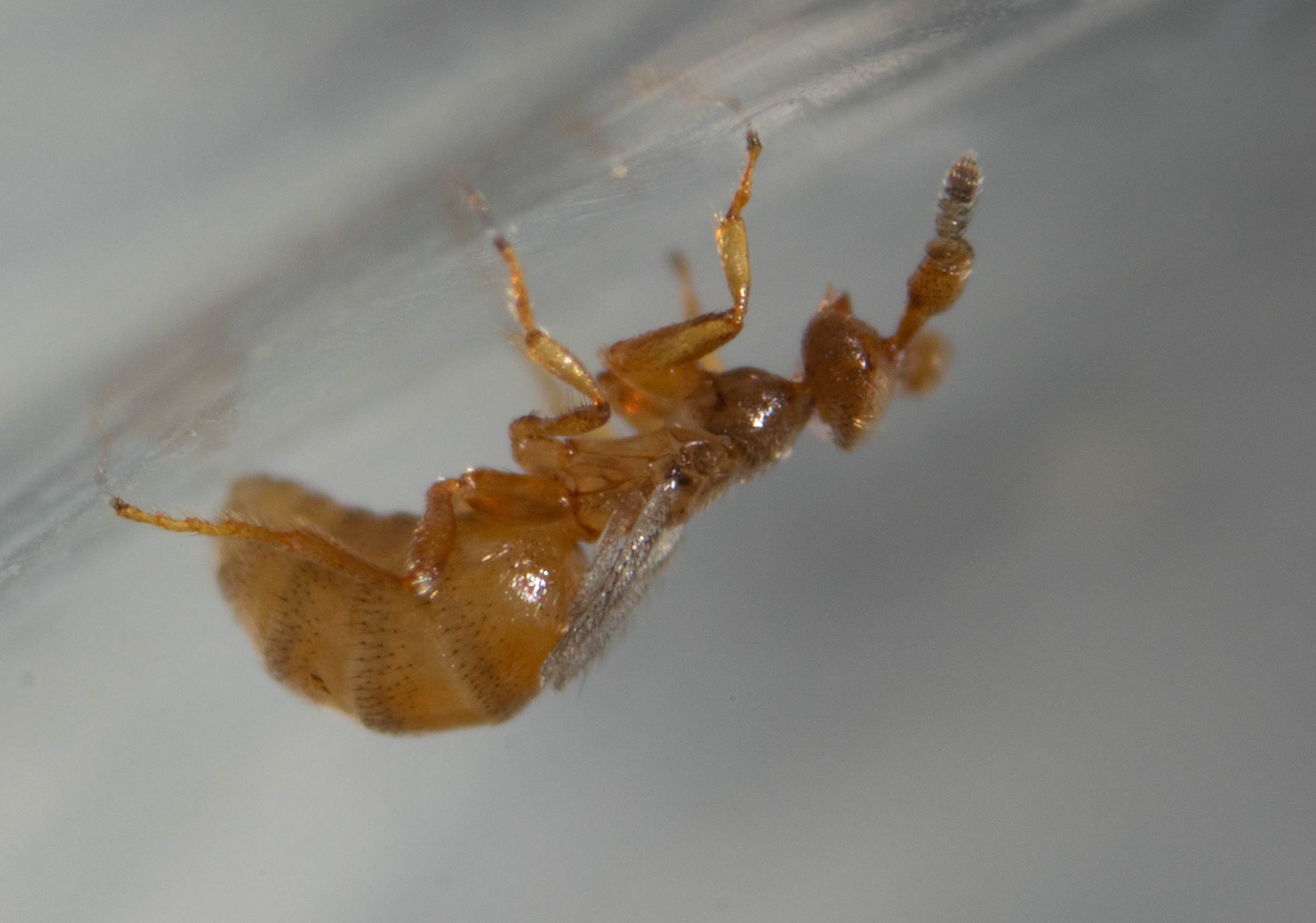
newly emerged male
The bulging antennae, short wings, and pale colouration of males are on show in this newly-emerged male. This is the same individual as in the preceding pupal photos. He doesn’t feed, and over the coming 7-8 days of his life his abdomen will shrink as his body depletes its internal reserves.
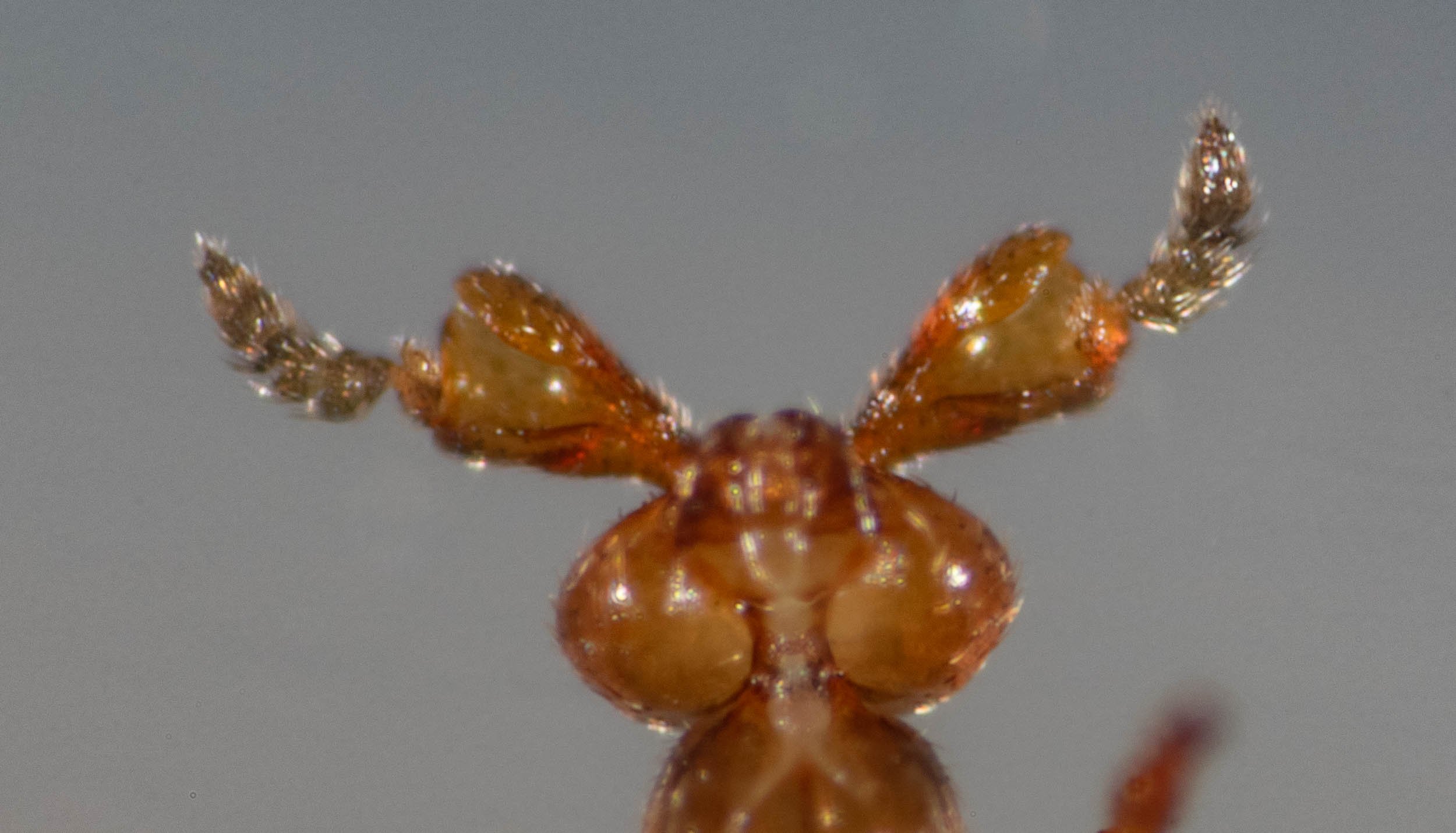
male antennae
The rather extraordinary structure of the male’s antennal scapes are consistent with drawings of M. australica and quite different to those of most other Melittobia species (Dahms 1984a). I think there can be little doubt about the species ID – particularly as this is the only Melittobia known from Australia.
[ventral view of male]

leaving home?
These sisters seem keen to depart the nest. They walk toward light, are relatively fast moving and responsive to movement … all the behaviours I’d expect to see in mated females of the long-winged form. They regularly communicate with one another using their antennae.
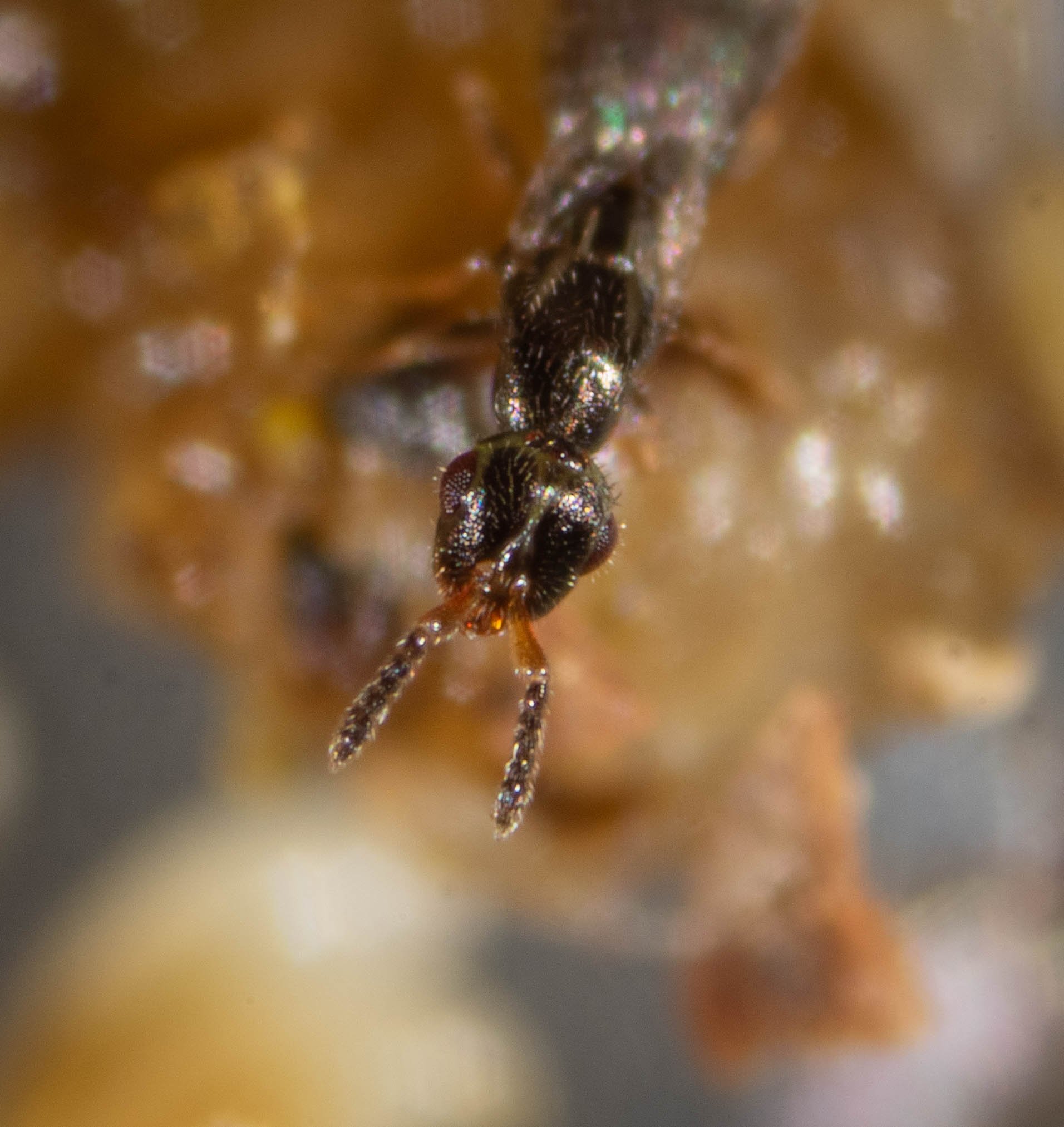
female features
A long-winged female, with large protruding eyes. Note the antennal scapes are not swollen (in contrast to males).

a posturing male
When I first opened Cell A it contained 7 males. They were clustered in a space at the end of the cocoon … along with several females. He appeared to be posturing – standing tall, wings elevated, antennae erect.
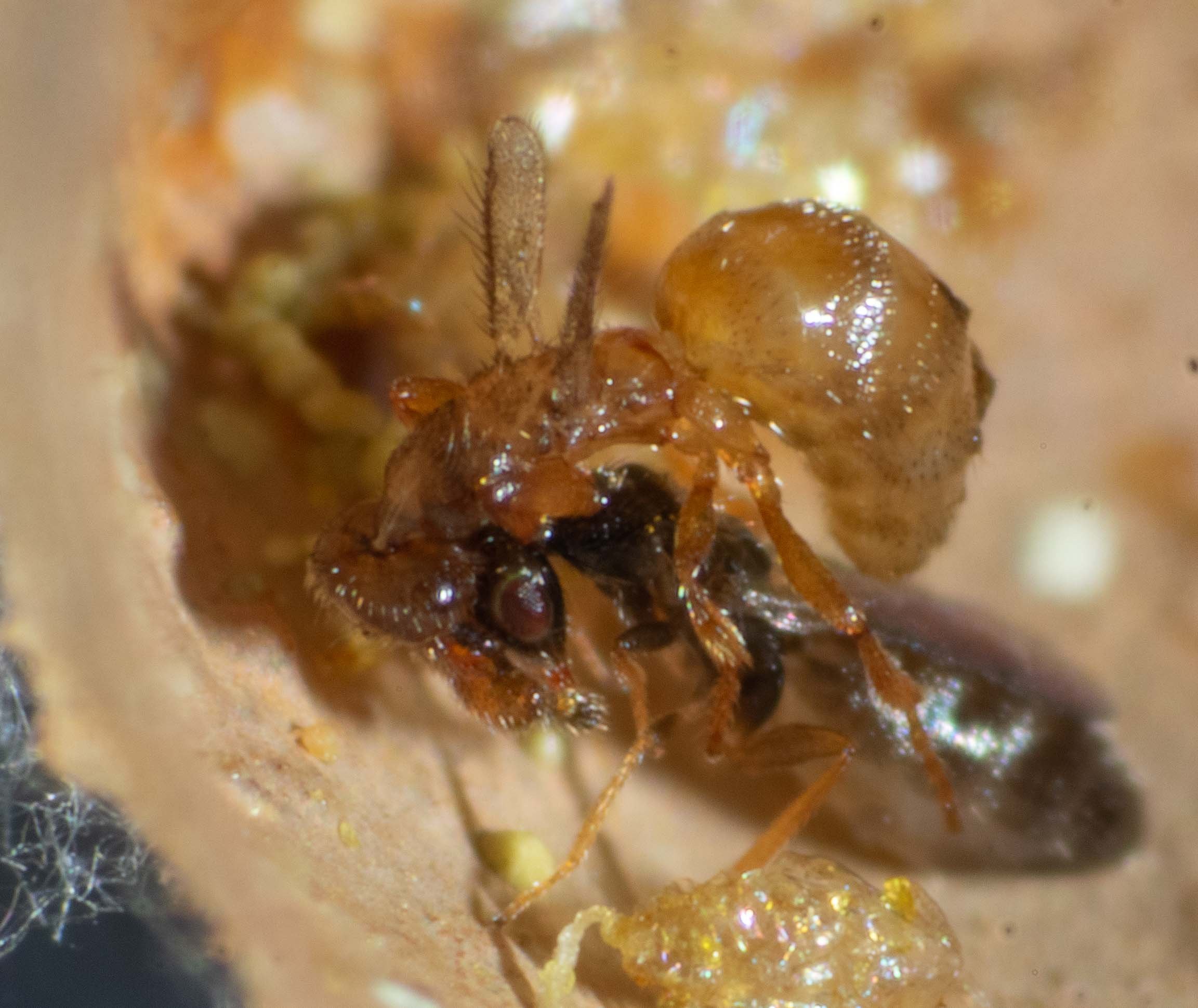
courtship is a rough affair
It looks like an attack. The male is tightly clutching the female’s head with his mandibles and she seems quite passive.
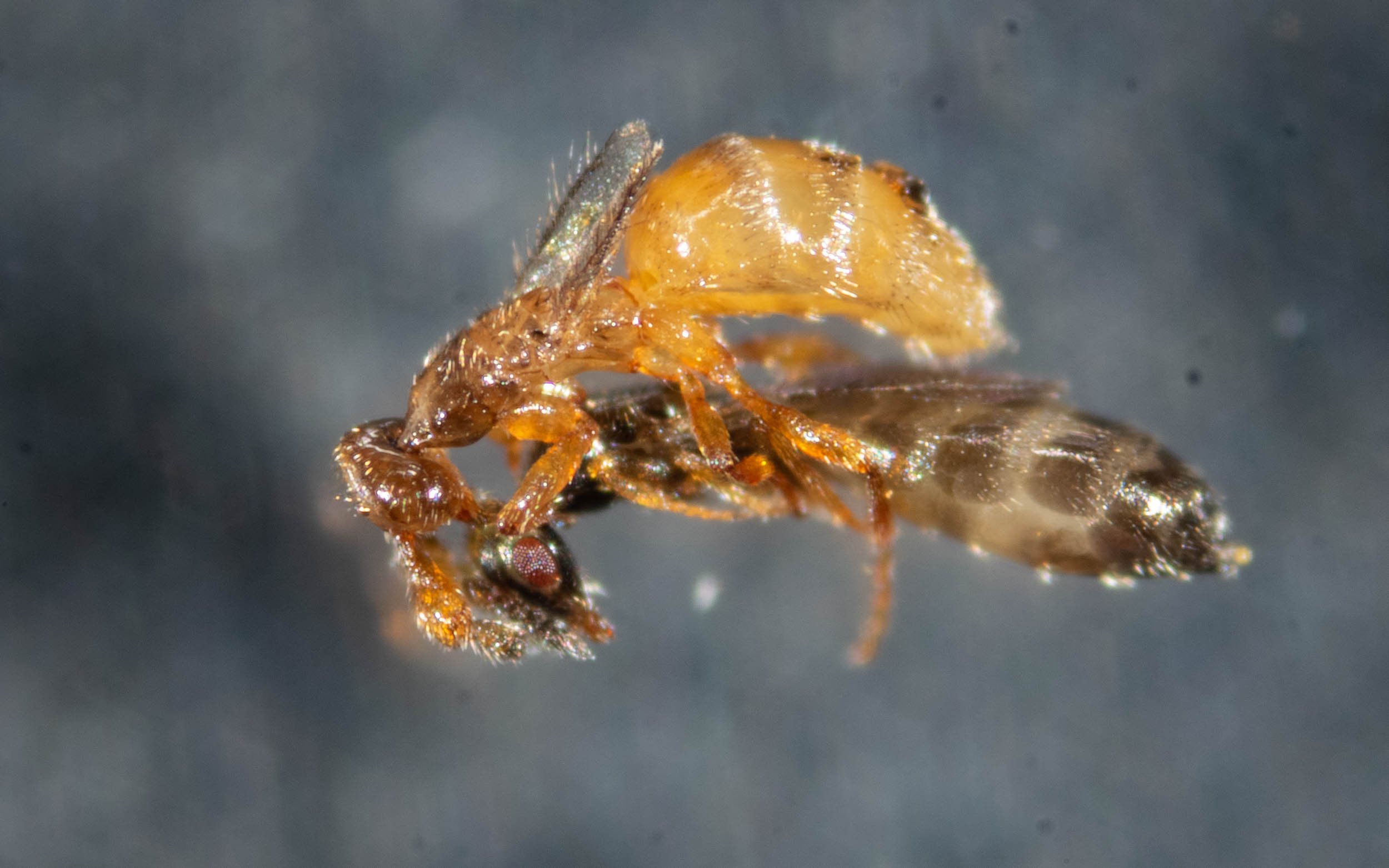
prolonged & persistent
The couple seem rather immune to disturbance during courtship. I used a paintbrush to lift the pair out into the open for a better photo … and they remained together.
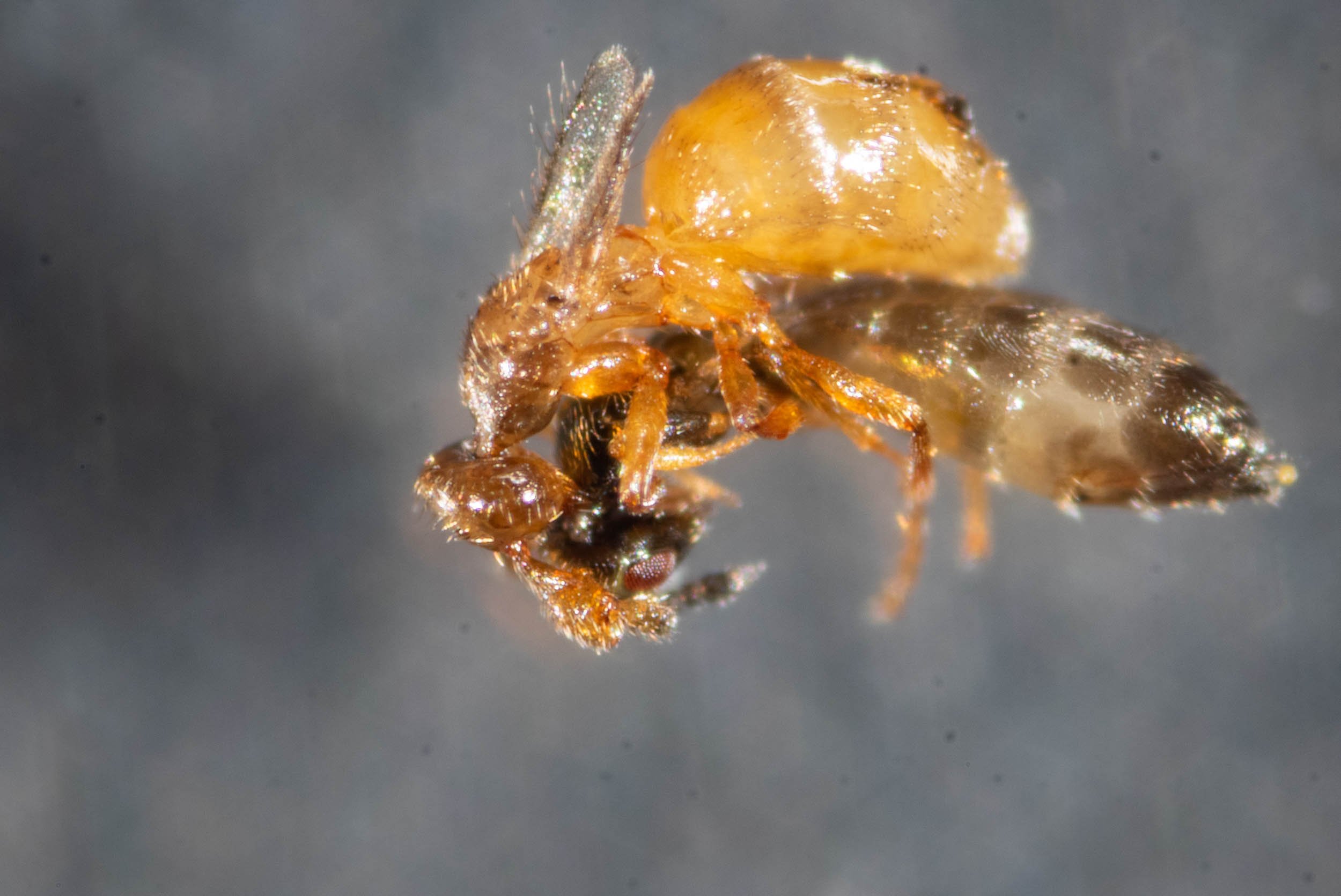
receptive or not?
He grips her antennae with his and strokes her body with his legs. The antennal contact probably also involved chemical cues, as he has surface glands on the enlarged scapes. At this stage it is not possible to say if she will be receptive – she doesn’t give consent until the end of the courtship ritual (Dahms 1984b). Females typically mate just once.
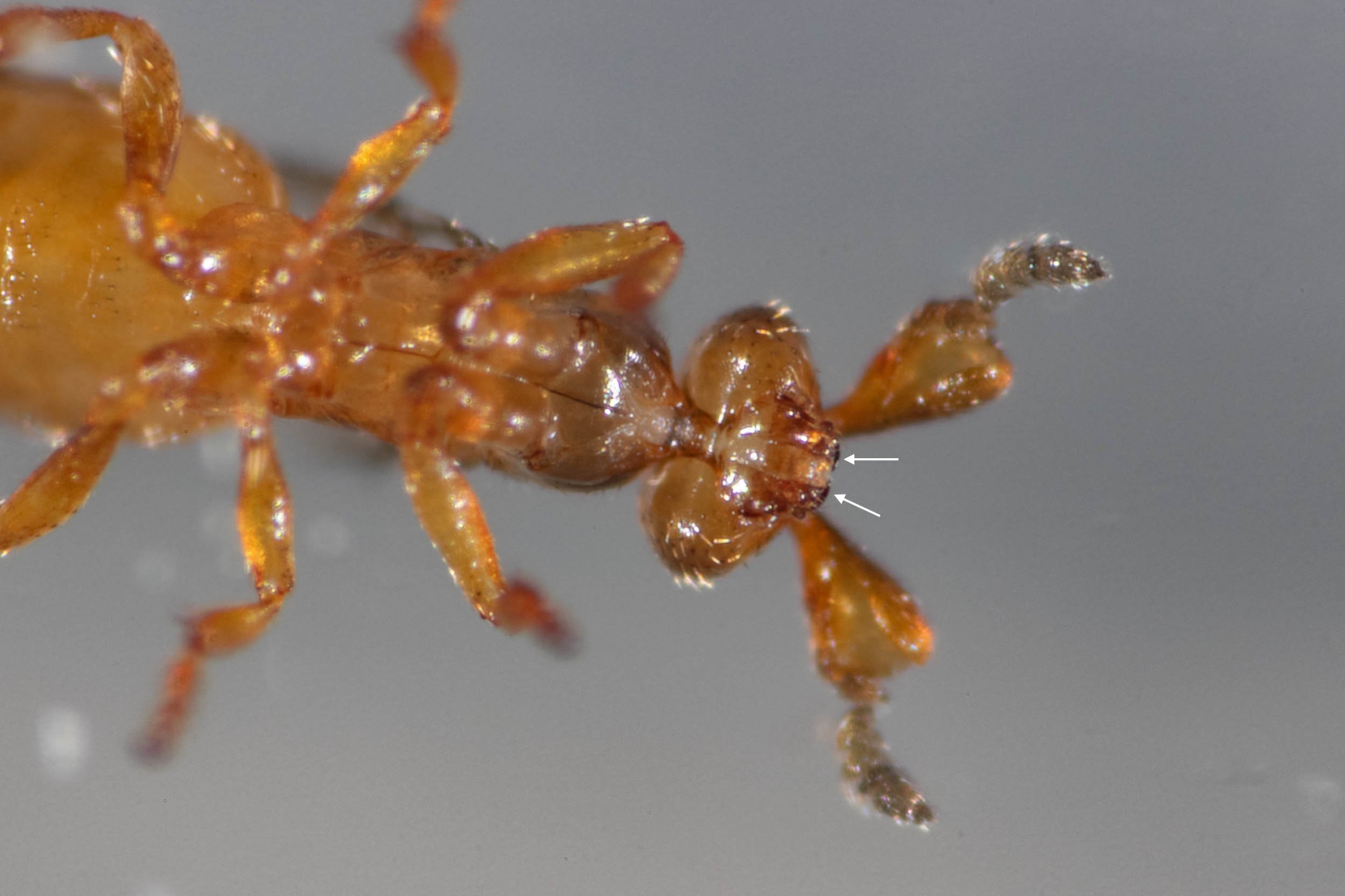
sharp teeth!
The mandibles (jaws) of males are larger than females, and each is tipped by a sickle-like tooth (arrows). This equipment is not for eating (males don’t eat). They can employ these as weapons in combat with rival males, and may fight to the death.
[ventral view of male]
















